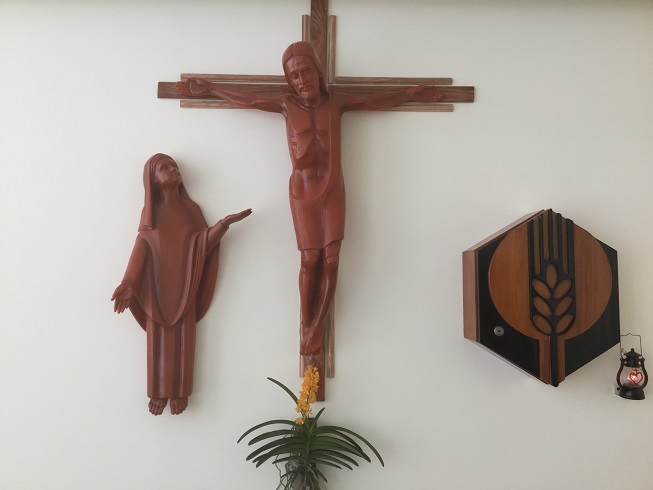Peter MALONE
BEST WISHES TO THE MSC SISTERS WORLDWIDE, 120 YEARS
BEST WISHES TO THE MSC SISTERS WORLDWIDE, 120 YEARS
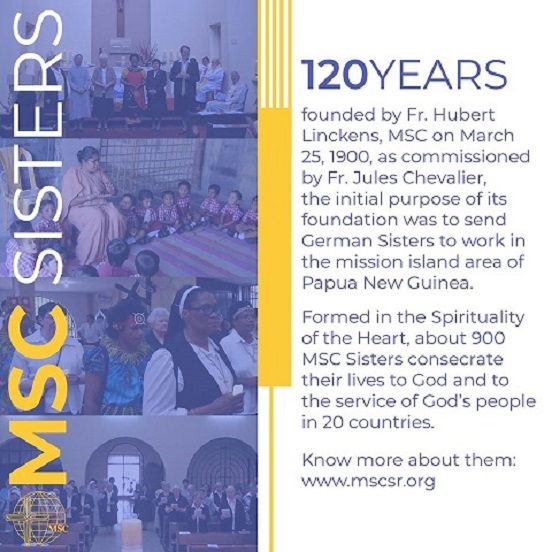
On March 25th, the MSC Sisters celebrate the anniversary of their foundation, their founder Hubert Linckens MSC, the spirit of Jules Chevalier MSC.
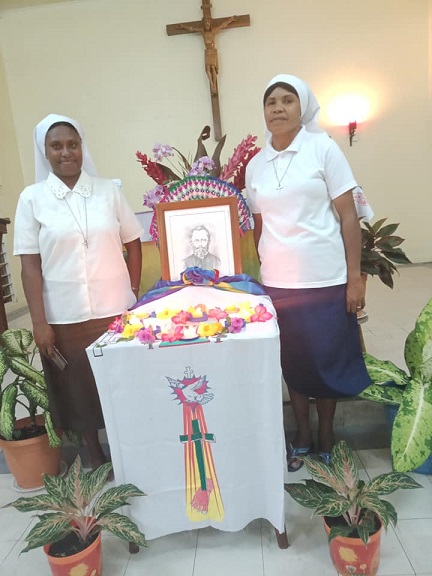
Below some pictures of the PNG Sisters celebration, with thanks to Rosemary Lavarabin and her Facebook page.

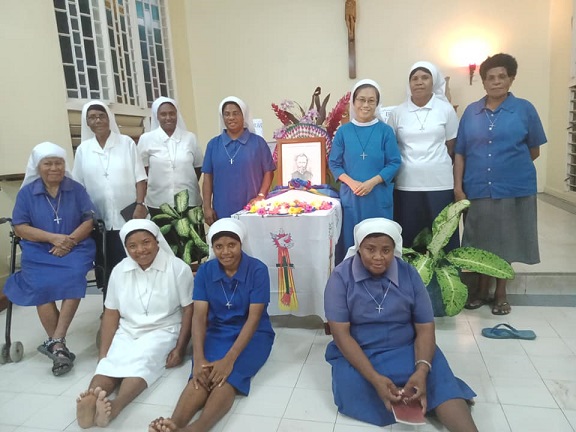
Update on Sacred Heart Monastery and St Mary’s Towers, Douglas Park , Lockdown
Update on Sacred Heart Monastery and St Mary’s Towers, Douglas Park, Lockdown

Letter from Provincial, Chris McPhee.
St Vincent’s Care Services and the MSC Aged Care Committee have directed that as of midnight tonight, Sacred Heart Monastery and St Mary’s Towers, Douglas Park are to be in Lockdown. This directive excludes Chevalier Resource Centre at this stage.
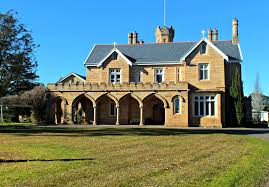
This means:
- · No visitors except aged care staff, contractors, or health care professionals
- · Residents appointments are for critical, clinical care and support by medical, pharmaceutical or health-related professionals only
- · A resident can now only leave the facility for health and medical reasons
- · All people who come onsite must have an up to date vaccination against influenza
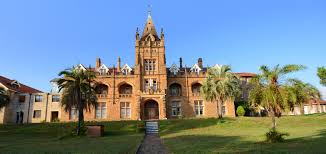
I wish to thank the Aged Care Committee, and St Vincent’s Care Services for their ongoing advice concerning this most difficult period in our history.
I would like to sincerely thank Fr John Kelliher MSC and Fr Dominic Gleeson MSC for their implementation of this present lockdown and for making certain this lockdown will be effective in protecting our men.
Above all, my personal thanks to each and every one of you my brothers, who are residing in Sacred Heart Monastery and St Mary’s Towers, for your understanding and cooperation in keeping yourself and members of our community safe.
MARY, FROM THE ANNUNCIATION CONSENT TO THE FOOT OF THE CROSS.
MARY, FROM THE ANNUNCIATION CONSENT TO THE FOOT OF THE CROSS.
From the Formation House in Vietnam, modelled on the Crucifixion and Mary at the foot of the cross in the Basilica in Issoudun.
This reflection for March 25th, Feast of the Annunciation, begins with an anecdote. It concerns our confrere Harry Jordan MSC – of many memories!
Recently, a Sister of Nazareth was speaking of Fr Jordan (who had a dominating influence on the Sisters in the 1970s and 1980s). She remembered something he said about Mary, something she has never forgotten. It is worth quoting.
The statement, which she remembered he uttered vehemently, was that
“Mary did not stand at the foot of the cross.
She took a stand at the foot of the cross”.
During Vatican II, Paul VI declared Mary, Mother of the Church. We take stands at the foot of the cross.
40 YEARS ANNIVERSARY, DEATH OF ST OSCAR ROMERO. LEGACIES.
40 YEARS ANNIVERSARY, DEATH OF ST OSCAR ROMERO. LEGACIES.
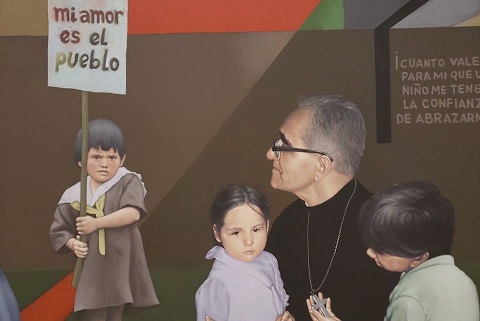
Painting by Rafael Valera at San Salvador international airport.
40th anniversary of Óscar Romero's assassination, March 24.
Excerpts from an article by Chris Herlinger, Global Sisters Report.
In a country where Romero's visage is seemingly everywhere — in churches, on street corners, in shops and living rooms — one question hovers at the sidelines: which Óscar Romero is being honored? The saint? The humble priest? The martyred Catholic? A man entombed in history at a particular time and place, or a living example for a country still struggling with the legacy and after-effects of a decade-long civil war?
Tellingly, in between visits to those neighborhoods, I kept returning to a point of pilgrimage: the grounds of the Hospital de la Divina Providencia, where Romero lived and where he celebrated his last Mass on March 24, 1980. The hospital is run by the Missionary Carmelites of St. Teresa.
One of those I spoke to was Carmelite Fr. Paul Henson, visiting from Los Angeles. We met just a few yards from the altar where Romero was felled by a gunman who, from outside the chapel, shot the cleric with a rifle.
Henson finds Romero's legacy continuing in the ministry of Pope Francis — a ministry dedicated to facing "the suffering of the poor," such as those at the U.S.-Mexican border. "His [Romero's] theology was always "God first,' " Henson said, leading him to reflect and question whether in the current crisis, borders "are absolute."
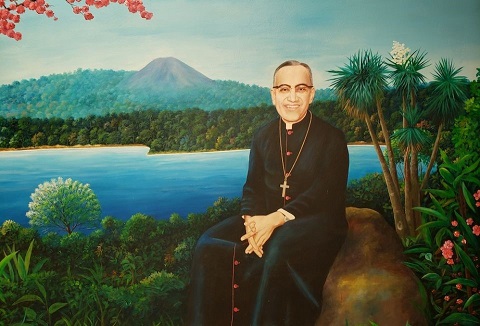
Portrait at the entry to the house where Oscar Romero lived
A few days later, in the same chapel, I met Carmelite Sr. María Julia García, the current hospital administrator. She was 28 when Romero was assassinated and saw him occasionally. She recalls a modest and quiet man who sought peace with an eye for practical solutions. With Romero's assassination, "people felt lonely and unprotected because nobody would stand up for them."
"He lived the word of God and made it come alive," she said, adding that Romero, like Jesus, offered his life as a sacrifice for those he loved. But at the same time, García believes Romero did not "fly a political flag. His flag was the Gospel."
At a moment when people in El Salvador were being killed "for nothing," Romero's prophetic stance against violence — and his specific call the day before his assassination that those in the military stop their killing — is what ultimately caused his death, García said.
"He was like a stone in the shoe," she said, noting that even today not all Salvadoran Catholics believe Romero is a saint.
"But people with a social consciousness believe he was a saint," she said.
Even so, those who have resisted the adoration of Romero still have the power to provoke.
Followers of the late right-wing political leader Roberto D'Aubuisson, who a United Nations truth commission named as the one who ordered Romero's assassination, "still believe he was in the right to order the killing," They still believe Romero was a terrorist.Some on the right said the Salvadoran left wanted Romero killed "so they could have a saint, a martyr."
When news spread of Romero's assassination, celebratory fireworks went off in some of San Salvador's wealthy neighborhoods. The wealthy called Romero a communist who, they believed, should have "tended to pastoral concerns.
It is likely that the debate over Romero's legacy will never be fully settled.
He is a saint. He made the ordinary extraordinary. He spoke the truth, and with that, changed lives and made a social transformation.
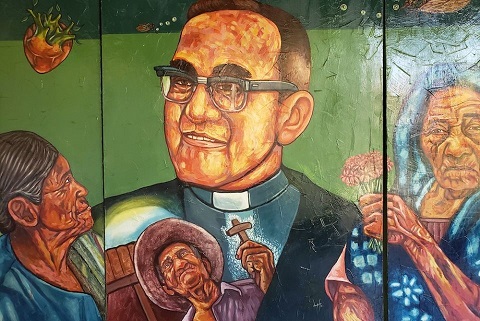
Painting at Suchitot Museum, El Salvador
NEW BOOK BY JIM LITTLETON MSC 86 YEARS…. CAMP HILL PARISH
NEW BOOK BY JIM LITTLETON MSC 86 YEARS…. CAMP HILL PARISH
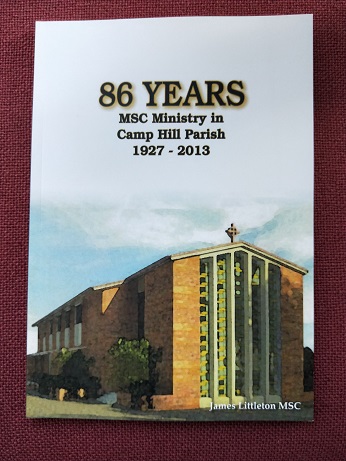
For almost 15 years, Jim Littleton has produced a strong list of books and booklets tracing many aspects of MSC life in the Australian Province, highlighting significant characters, histories of particular ministries and three tributes to our deceased confreres.
This book is a look back at a parish we had to withdraw from as numbers diminish.
It is: 86 Years, MSC Ministry in Camp Hill Parish, 1927 – 2013. Undertaking this ministry occurred four years before the opening of Downlands College, which remains the sole MSC Ministry in Queensland, now a significant lay ministry as well.
Sadly, this is Jim’s final book after a significant and substantial contribution to our appreciation and understanding of the MSC past.
With thanks.
OUR CURRENT REALITY AND CHALLENGE
OUR CURRENT REALITY AND CHALLENGE
Facing Coronavirus, Covid-19, with seriousness, humour and generosity – with less self-focus.
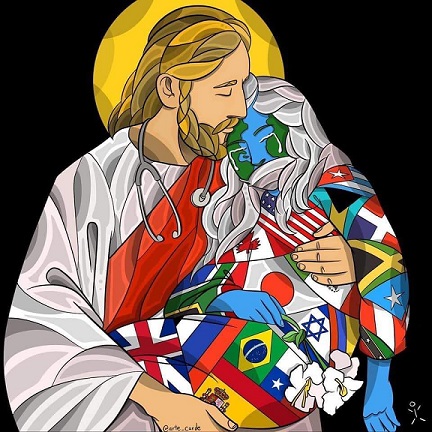
Jesus for an international pandemic.
Here is a quote from the Victorian Bishops’ letter concerning Masses and Churches:
Again and again Jesus said ‘peace be with you.’ (Jn 20:19)
Let us not panic, nor be anxious, nor reduce ourselves to caring only for ourselves. This is a time to be sensible, practical, prayerful, and to share Christ’s peace with those who are struggling to feel calm and safe.
Thank you for all your patience, prayers and resilience.
These challenges came from the Facebook page of Claude Mostowik, MSC Justice, Peace and the Integrity of Creation. Lessons can be learnt.
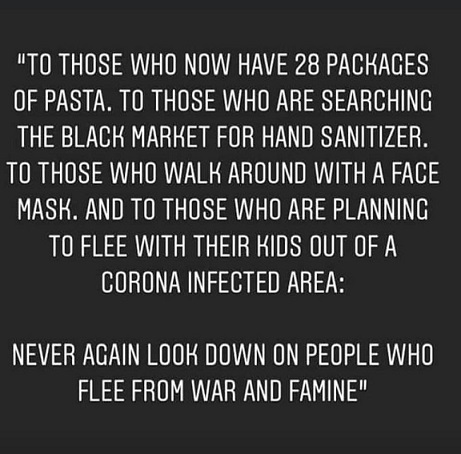

And so...
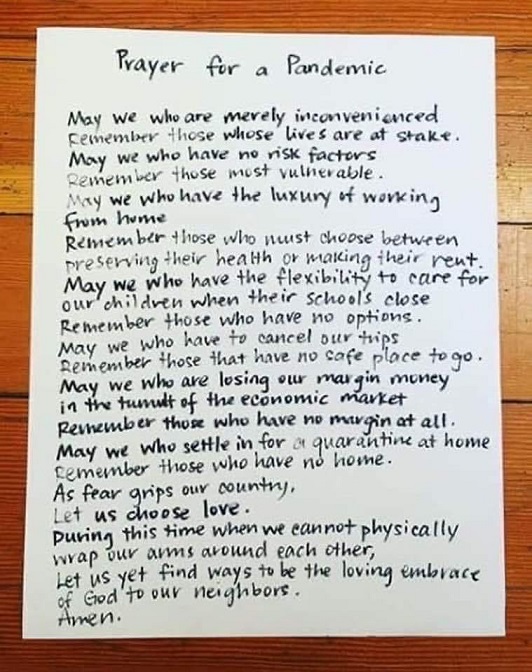
... And, as well, the following humorous reponse has been circulating this week.
|
MSC PHILIPPINES 40th ANNIVERSARY - AND CORONAVIRUS
MSC PHILIPPINES 40th ANNIVERSARY - AND CORONAVIRUS

We had hoped to feature this week the 40th Anniversary of the Philippine Province of the Missionaries of the Sacred Heart

and the blessing of the Church-Shrine of Our Lady of the Sacred Heart in Surigao. It was not to be.

Anniversary celebrations were to include ordinations to the Deaconate. These will still go ahead but on a smaller scale with family.
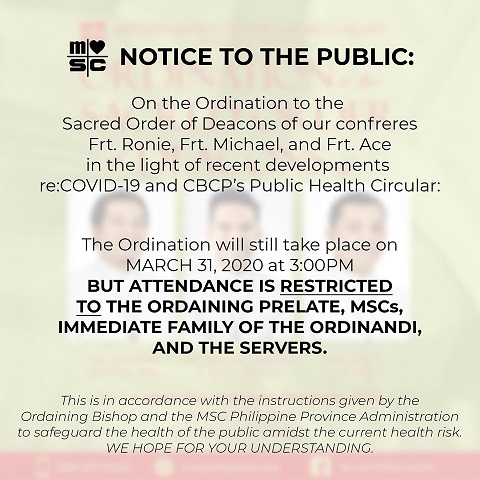
We still offer best wishes to the Province and its members and safe keeping from the virus.
MARCH 19th, St JOSEPH. IMAGES
MARCH 19th, St JOSEPH. IMAGES
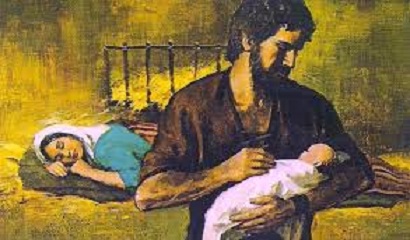
Jules Chevalier had a strong devotion to St Joseph, ‘Model and Patron of those who love the Sacred Heart of Jesus”.
The liturgy, referring to the Psalms and the tradition of the Wisdom literature about fathers and sons, calls him 'the wise and just man'.
The 19th century had many holy cards and statues of St Joseph. Often, he was the bearded, elderly carpenter with the young Jesus.

Were you to Google St Joseph, Images, that would be the main impression.
However, here are a few more images to suggest a variation on these images for his Feastday.

![]()
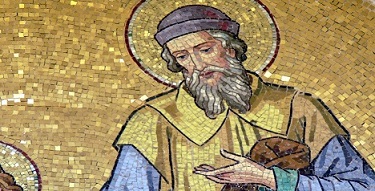
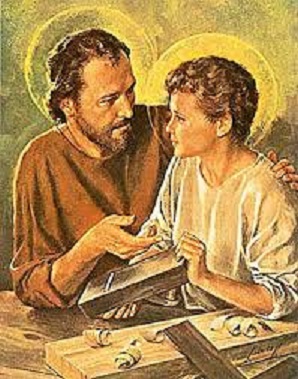
PAX CHRISTI 75th ANNIVERSARY
PAX CHRISTI 75th ANNIVERSARY.

Claude Mostowik MSC has been a President of Pax Christi Australia. In his report in the recent MSC Magazine, Chris McPhee notes that Claude has arranged to visit our parishes to work with them on Justice, Peace and the Integrity of creation. This is in line with the new initiative of the JPIC Committee and the extended scope of its activities, which will now include the overseeing and coordination of JPIC initiatives and activities in all MSC entities, MSC Parishes, MSC Colleges and MSC Ministries.
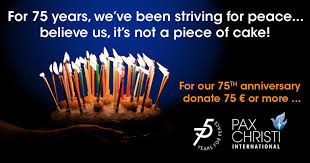
This noting of the 75th anniversary of the establishment of Pax Christi is a contribution.
There is a comment from the current Pres of Pax Christi and some background information about the founder of the organisation, Marthe Dortel Claudet, a French married lay woman.
Pax Christ was officially founded on 13 March 1945. Pierre Marie Théas, Bishop of Montauban in Southern France gave Ms Marthe Dortel Claudot his full support to start a Christian movement for reconciliation and peace.
On the evening of March 13th this movement was baptized as Pax Christi in a flat in Montauban.
Today, 75 years later, Pax Christi International continues, with the same passion and dedication as our pioneers, to extend the message of peace, reconciliation and active nonviolence throughout the world.
We are deeply grateful for all of you and your extraordinary efforts to live out Jesus’ message “Peace I leave with you; my peace I give you... Do not let your hearts be troubled and do not be afraid.”
For those who would like to read something longer on the founder of Pax Christi.
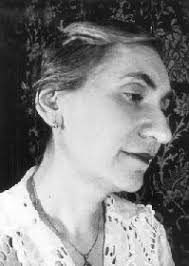
Marthe Claudot was a native of the Alsace-Lorraine region, which made her well aware of the sensitivities in French-German relations. She studied literature at the Clermont-Ferrand University, and started as lecturer for Latin, Greek and French in a government high school. She was well appreciated for her qualities as a teacher and lecturer. Marthe Claudot was a progressive republican and strongly supported the separation of church and state. This ‘wordly women’ was a practicing Christian and proclaimed without fear her well thought-out contempory beliefs. She married Auguste Dortel, a widower with three children, in Bordeaux in 1939. From then on she was known as Marthe Dortel-Claudot. The children – Collette, Michel and Jean – bore the same family name. Because of the war, the family moved to Agen in Southern France at the end of 1940. From the beginning Marthe and her husband opposed the Pétain government, which was collaborating with Nazi Germany. When the persecution and deportation of Jews began, they helped hide Jewish families. In 1942 Auguste Dortel joined the Resistance.
Marthe gathered energy from a deep spirituality, although she always remained very discreet about this aspect of her life. It was only after her death that her son Michel found her 81-page “spiritual journal.” His mother had insisted that her journal not be opened before her death. She also left a 13 page manuscript dated August 1979: “Details about the founding of Pax Christi and the first years of the movement.” In 1995 during the celebration of Pax Christi International in Assisi, Michel Dortel-Claudot presented an interesting paper based on both documents, entitled “The First Years of Pax Christi, from 1945 to Easter 1950.” It left us with a deeper insight into the hidden motivations of one of our founders.
Her prayer
Besides intense professional activity and daily family cares, Marthe Dortel-Claudot continued to develop her spiritual life. She read religious literature, such as Therese of Avila, and assisted at Mass whenever possible. She had regular contact with St. Hilaire parish of Agen and with the parish priest, Joseph Dessorbes. On 10 November 1944 she was inspired to pray for German priests, an inspiration that initially provoked an inner resistance. She noted in her spiritual journal: “I was inspired to understand the mystery of Catholicism, that Jesus gave his life for all, and consequently that no one should be excluded from our prayer.” One month later, on December10th, after Communion and Thanksgiving, she was again inspired to pray for the German people: ”Christ gave his life for them as well as for ourselves.” At Christmas and during that week the inspiration to pray for the Germans was repeated many times, and she received an inner invitation to do something for them once the war was over.
On 24 January 1945 Marthe noted in her journal that when praying, she clearly felt that she should pray and make other people pray ‘for the healing of the German people from the moral and spiritual disaster caused by twelve years of Nazi rule’. She consulted the parish priest, who encouraged her to start a prayer group. On this she wrote: “The first two participants of the prayer group are a war-widow and a daughter whose father has been deported to Germany.” Shortly after, Fr. Dessorbes suggested speaking to a Church leader who could support the idea of praying for Germany.
She mentions in her spiritual journal the support of Joseph Dessorbes: ”Without his support and his approval I would never have dared to consider the inspiration I received as the will of God. I could not have faced the problems and dangers of the atmosphere and the situation at that time: an unfinished war, prisoners and deported who did not return, all kinds of restrictions, lack of freedom, the hate of the occupier… I was obedient to God, and that was it.”
Meeting of the two Founders
In 1979 Marthe Dortel-Claudot wrote about the origin of Pax Christi: “On March11, 1945 I called on Mgr. Théas at his diocese in Montauban, accompanied by my husband and my uncle. I was allowed a personal meeting with the bishop. When entering I felt convinced that it was God’s will that I should turn to him. Mgr. Théas agreed, providing I submitted his approval to the archbishop of the region. On March 12th I visited Cardinal Saliège in Toulouse who, without hesitation, gave his encouragement. The next day, on 13 March 1945, Bishop Théas authorised me as his secretary to start a crusade of prayer for Germany. As I was leaving, he added: “You have been sent by the Holy Spirit.” She noted further: “On the same evening my uncle proposed to call the movement ‘Pax Christi’, which I accepted gladly.”
In the very first Pax Christi circular letter from Easter 1945, Bishop Théas, based on his own experiences, wrote: “Our devotion to the excellent cause we want to serve will become a never-ending source of sanctity and joy. He who writes this has celebrated two times a Holy Mass dedicated to Germany during his captivity in the camp in Compiègne. This gesture of Christian charity gave him great satisfaction.”
Pax Christi began with the joining of two spiritual experiences of forgivingness and reconciliation – those of Pierre Marie Théas and Marthe Dortel Claudot. In the simple meetings on 11 and 13 March 1945 these experiences came together and resulted in one single project. Pax Christi began as an authentic spiritual effort, a sign of the reconciling love of Jesus for the German nation and for all people and all nations.
Steps towards reconciliation from 1945
In the same circular letter from Easter 1945 Théas noted: “Many people do not understand that Catholics who have resisted the German occupation are now united in praying for Germany. Why help the Germans after fighting them? We who are obeying the spirit of Christ and have confidence in his inspiration understand this very well. We are full of Christian joy. This does not keep us from calling evil whatever is evil. We reject all systems that are not in agreement with the Gospel. The Gospel rules our life. Our hearts are inspired by a feeling of love that includes our enemies and forgives insults, a love that wants to heal the German people and save them from further evil.”
Bishop Théas and Marthe Dortel-Claudot were both firmly convinced by the Gospel call to reconciliation. They had great credibility as they promoted reconciliation because they had resisted any collaboration with Nazi Germany and without hesitation had taken action to save Jewish people. But Pax Christi as a movement for reconciliation was not welcomed by everyone. Several French bishops stood aside and kept silent. Bishop Théas, however, did not hide his convictions. He said that he loved the communists as human beings, but not their vision of society. Pax Christi opposed the French communists who claimed to monopolize the work of peace after the Second World War.
Social dimension
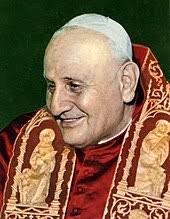
Bishop Théas and Pax Christi also did not agree with those sections of the French resistance who claimed to impose their own justice after the war. Théas named the so-called purifications that occurred barbaric. On 10 September 1944, in Montauban right after his return from imprisonment, he caused a sensation by declaring “justice must be done, but only the installed legal authorities are entitled to pronounce verdicts in a serene and compassionate atmosphere, guaranteeing justice for everyone.” Théas preferred to be called “the imprisoned bishop” rather than a hero of the resistance. His social commitment set such an example at that time that Max Lagarrique in his Revue d’Histoire called him “an abbé Pierre before abbé Pierre.” Some also call him a pioneer of the theology of liberation. In the opinion of Théas the liberation from Nazi dictatorship should have been followed by a liberation from servitude to capitalism.
In August 1945, Marthe Dortel-Claudot gave a speech about the new Pax Christi movement during the “Semaines Sociales” in Toulouse (where Social Weeks had started again right after the Second World War). There, she met Angelo Roncalli, the new apostolic nuncio in France who later became Pope John XXIII. Mgr. Roncalli, who convened the Second Vatican Council on 11 October 1962 and published the encyclical Pacem in Terris, was a fervent supporter of Pax Christi from the very beginning.

CORONAVIRUS – SOME CONSEQUENCES
CORONAVIRUS – SOME CONSEQUENCES

This computer post for Monday is running late. This is a coronavirus reason as to why.
It concerns me, the editor of this site, Peter Malone.
On the plane from Heathrow this weekend, the Qantas pilot suddenly announced the decision by the Australian Government (announced after we had taken off from London) for all travellers arriving after midnight on March 15th to go into self-isolation. (And there were quite a lot of passengers.)
I imagined that I would be confined to our house in Kew, to my room, housebound.
Instead, wearing a mask, I was brought to our recently acquired house in Central Road, Blackburn. It is literal self-isolation, communication by phone and email, staying in the house but an isolated walk in the park is possible. And thanks to Kenji and Mark for setting me up with this help.
No symptoms - caution concerning the spread.
While, the situation is, in fact comfortable, it makes me realise the difficulties that this kind of isolation must be having on those who have ailments and disabilities, those who are older, mothers with children at home, and those who don’t have the taken-for-granted resources we have…
To be continued, literally for fourteen days – emerging, in hope, out the door on March 30th.
